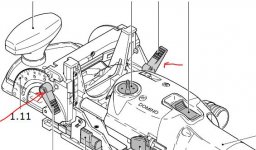Gerald Yang
Member
- Joined
- Feb 22, 2021
- Messages
- 28
First I do not have a domino but considering getting one. kinda doing the research now.
from all you guys mentioned Seneca domiplate for imperial lumber like 1/2 inch and 3/4 inch boards is a great option, but I do not feel I need such a big plate to fix this simple problem.
And I found this video, what do you guys think? looks like I can just 3d print this gauge from any 3d print shop around and make the domino imperial. maybe cost CAD$10 max.
=9s&ab_channel=ToolCurve
from all you guys mentioned Seneca domiplate for imperial lumber like 1/2 inch and 3/4 inch boards is a great option, but I do not feel I need such a big plate to fix this simple problem.
And I found this video, what do you guys think? looks like I can just 3d print this gauge from any 3d print shop around and make the domino imperial. maybe cost CAD$10 max.
=9s&ab_channel=ToolCurve

